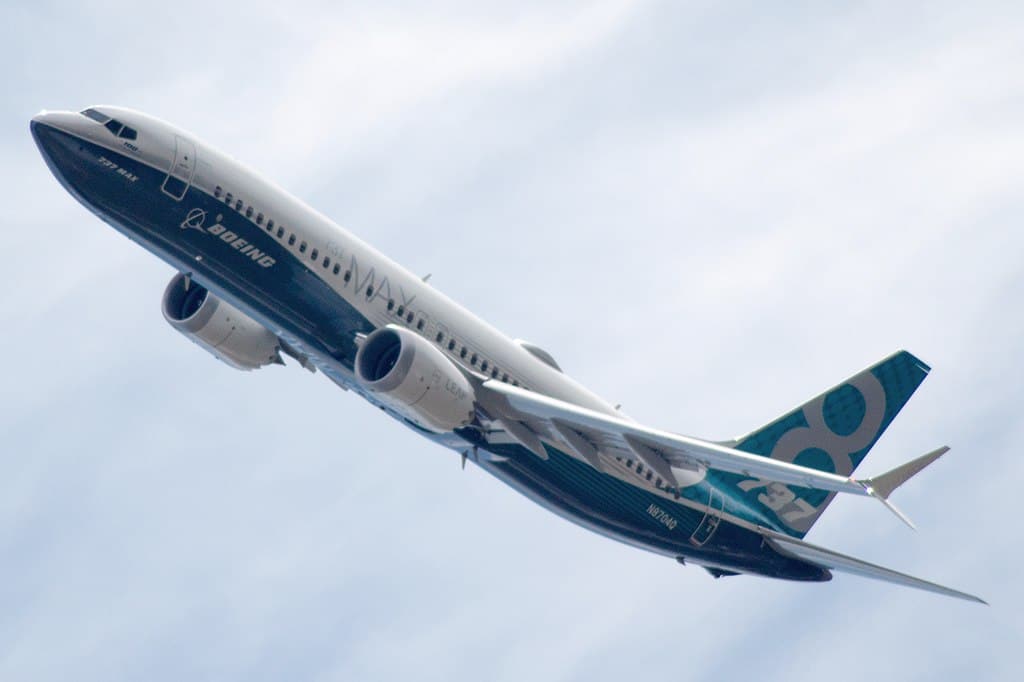Aerospace
As demand surges, IAG orders a large number of planes from Airbus and Boeing.
As demand surges, IAG orders a large number of planes from Airbus and Boeing.

Following shareholder approval, International Airlines Group (IAG) confirmed a purchase order for 37 more A320neo aircraft. The newest order brings the total for the year to 59 single aisle aircraft. Earlier agreements for 22 A320neo Family (17 A320neos, 5 A321neos) were announced in March and June 2022.
China’s top 3 airlines will purchase nearly 300 Airbus A320neo aircraft.(Opens in a new browser tab)
Furthermore, it reported that its shareholders had approved a deal with Boeing to order a combined 50 737-8-200s and 737-10s, plus 100 options. In May 2022, Boeing and IAG announced their tentative agreement, which was awaiting shareholder approval. In November, a record of the firm order for 50 737s will be available on Boeing’s Orders & Deliveries website.
IAG is one of Airbus’s largest international customers and operates a sizable number of Airbus aircraft in its fleet. These newest models of aircraft will play a significant role in IAG’s strategy to achieve net zero emissions by 2050.
The A320neo Family is equipped with the most recent technologies, such as Sharklets and new generation engines, which together save at least 20% on fuel. The A320neo Family is the most popular aircraft in the world, with more than 8,500 orders from more than 130 customers.
Airbus delivers its 500th A350(Opens in a new browser tab)
The 737-10, the largest model in the family, can travel 3,300 miles and accommodate up to 230 passengers in a single class. The fuel-efficient jet can travel on 99% of single-aisle routes, including those 757s usually service. With the 737-8-200, IAG will be able to outfit the aircraft with up to 200 seats, boosting revenue potential and lowering fuel consumption.
The 737 uses the newest CFM International LEAP-1B engines, Advanced Technology winglets, and other enhancements to provide the highest efficiency, reliability, and passenger comfort available in the single-aisle market. The average fuel efficiency of the 737 family of aircraft is 20% higher than that of the first Next-Generation 737s when they entered service and 14% higher than that of the Next-Generation 737s that are currently the most fuel-efficient.

Aerospace
Boeing Transfers Rocket Stage to NASA, Paving Way for Human Moon Mission

Boeing has achieved a significant milestone by providing NASA with the second core stage of the Space Launch System (SLS) rocket.
This crucial component, crafted at NASA’s Michoud Assembly Facility (MAF), is set to propel the Artemis II crew into lunar orbit, marking humanity’s return to deep space after a 50-year hiatus.
The monumental Boeing-built rocket stage, the largest element of the Artemis II mission, will embark on a journey aboard the Pegasus barge, traveling 900 miles to NASA’s Kennedy Space Center.
Comparison of two legendary aircraft B777x vs B747 aircraft:Click here
Upon arrival, it will be meticulously integrated with other essential Artemis II components, including the upper stage, solid rocket boosters, and NASA’s Orion spacecraft within the iconic Vehicle Assembly Building. This intricate integration process is a vital step toward the eagerly anticipated Artemis II launch, slated for 2025.
“Boeing-built products helped land humankind on the moon in 1969, and we’re proud to continue that legacy through the Artemis generation,” remarked Dave Dutcher, vice president and program manager for Boeing’s SLS program. “Together, with NASA and our industry partners and suppliers, we are building the world’s most capable rocket and paving the way to deep space through America’s rocket factory in New Orleans.”
NASA, Lockheed Martin Reveal X-59 Quiet Supersonic Aircraft:Click here
The delivery of Core Stage 2 marks a significant achievement in the evolution of the SLS rocket. Towering over 200 feet and powered by four RS-25 engines, this core stage, coupled with two solid-fueled booster rockets, will generate a staggering 8.8 million pounds of thrust. This immense power is crucial to launching Artemis II and future missions into the vast expanse of space.
The SLS rocket stands unparalleled in its capability to transport both crew and substantial cargo to the moon and beyond in a single launch. Its extraordinary capacity will facilitate the delivery of human-rated spacecraft, habitats, and scientific missions to destinations including the moon and Mars, ushering in a new era of space exploration.
-

 Travel1 week ago
Travel1 week agoAir India to Expand US Operations with Three New Routes After a Decade
-

 Travel2 weeks ago
Travel2 weeks agoWhy We Should Avoid These Stamps in a Passport
-

 Airlines1 month ago
Airlines1 month agoInvestigations Reveal Fake Chinese Titanium in Boeing and Airbus Jets
-

 Tech4 weeks ago
Tech4 weeks agoChina’s CATL Plans 1,800-Mile Electric Plane Launch by 2027
-

 Airport3 days ago
Airport3 days agoTop 10 Largest Airports in the World by Size
-

 Aerospace4 weeks ago
Aerospace4 weeks agoChina’s Fighter Jets Turn Wings into Autonomous Drones
-

 Airlines4 days ago
Airlines4 days agoAir India Rolls Out A350s for Delhi-New York JFK and Newark Routes
-

 Defence3 weeks ago
Defence3 weeks agoBoeing Enhances Chinook with New Engines and Block II Upgrades at $96 Million







